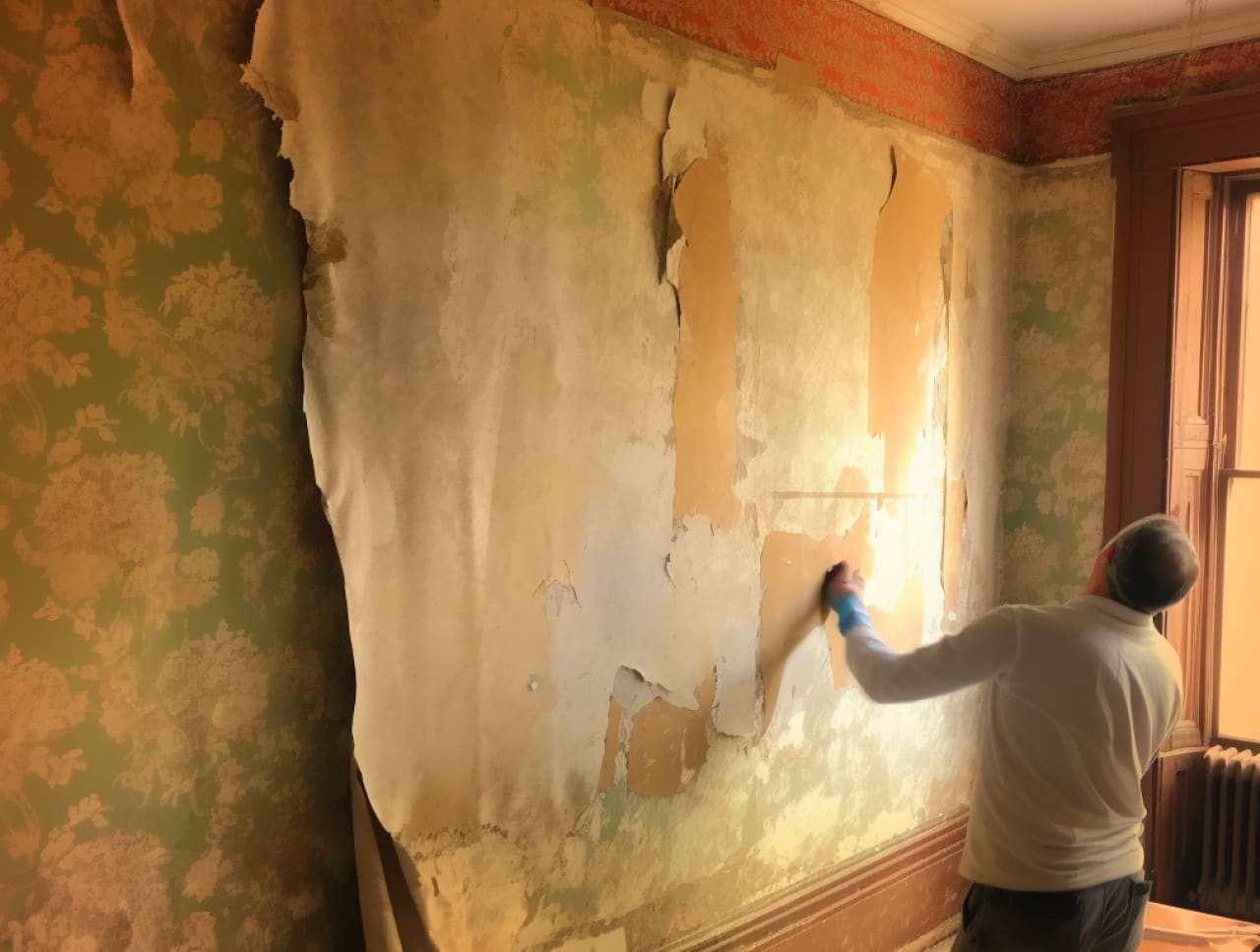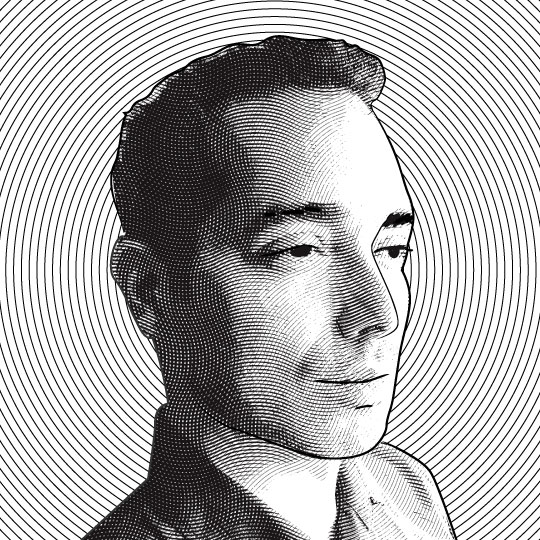It happens all the time when renovating a space. People stumble across pieces of history, buried beneath layers of paint and wallpaper. Art Deco. Art Nouveau, Edwardian. Each scrape wears down decades of aesthetics, culture and prevailing ideas of the time, but suddenly you stop, because a pattern catches your eye. The design matches the ambience of the space perfectly, and is from the same era as your furniture. Maybe.. just maybe.
But your enthusiasm quickly fizzles out to disappointment as the pattern cannot be found anywhere on or offline, despite your best Googling. Does anyone remake extinct wallpapers? What do you even call this service?
If it helps any, most people referred to this process as:
- Wallpaper Reproduction
- Recreating Old Wallpaper
- Reprinting Vintage Wallpaper Rolls
- Replicating of Discontinued Wallpaper
- Historic Wallpaper Restoration/Renovation
Regardless of the name, you’re probably wondering:
Can It Be Done?
That’s the #1 question from every client call.
The Short Answer is: YES!
It is possible to create faithful reproductions of discontinued patterns and prints. In fact, many of the wallpapers recreated in our studio are well over a century old.
The Long Answer is: It depends on how you define “Done”
Each renovation project brings unique challenges, and there may be limitations based on the state of the original samples or the desired printing method. There are a few obstacles to overcome and this article was written to give you a printer’s perspective when replicating old wallpaper designs.
Criteria #1: Wallpaper Completeness
If your wallpaper pattern is intact, relatively free of damage or missing pieces, count yourself lucky because this takes significant design and prepress time off your project’s budget.
Even if it is severely damaged or incomplete, all hope is not lost. With high resolution scanning equipment and some creative ingenuity from graphic designers, it is quite possible to bring most ancient prints from the brink of extinction.
NOTE: You can learn more about identifying the completeness of a wallpaper pattern in our sister article How to Reproduce Existing Wallpaper Designs
Criteria #2: Wallpaper Condition
The amount of work a retoucher has to perform to bring your old wallpaper up to clean and modern standards will probably be the greatest impact on the scope and budget of your project. Here’s a list of defects in order of severity to help you evaluate your own sample:
- Damaged by smoke/fire
- Damaged by rust
- Damaged by mould
- Damaged by water
- Dirty or stained appearance
- Hairs & Fibers
- Dust & Scratches
- Faded by sunlight or time
Rest assured that there is a high possibility that your pattern is good enough. The question of how much it will cost will vary greatly from shop to shop based on the aforementioned defects.
Criteria #3: Wallpaper Intricacy
The complexity of your wallpaper sample is another large factor in assessing the scope of your project. It’s one thing to replicate polka dots, and another to hand trace floral prints from the ornate 1800s.
For similar reasons, the number of colors in your sample determine how many layers of graphics must be isolated and cleaned up by a professional retoucher/designer.
PRO-TIP Take a good look at your wallpaper and count the different colors. Sometimes at first glance they don’t seem like a lot, until you realize there are similar families of colors, with lighter tints and shades in hue that most people don’t see at first glance. Include the background color in your color count, along with any outline colors.
This is how we assess jobs based on color alone in our shop:
- 2 Colors: Easy & Fast
- 3-5 Colors: Moderate / Normal
- 6-9 Colors: Complex & Involved
- 10+ Colors: This is Going to Take a While
The good news is that once your colors are isolated they can not only be matched to an original but substituted to match a Pantone or Benjamin Moore color that matches the decor of your space. This is the benefit and power of using digital reproduction methods. The options are limitless!
Criteria #4: Wallpaper Faithfulness
So you completed the first 3 criteria and placed your order. Your wallpaper has been replicated and cleaned up as a digital file. You’re stoked at how good it looks and are ready to “pull the trigger”, but you are concerned about cost.
The key question here is: “How close is close enough?”
Capturing the actual detail of your wallpaper is not a big challenge. Thanks to advances in large format scanning, even fairly large wallpaper patterns can be digitized in one go at stunning resolutions.
The real issue here is color. The amount of wiggle room you give your printshop for color matching represents the largest factor in overall cost of production. You may be happy with the first sample, or you could be a real stickler for accuracy on multiple colors. The latter case requires a few rounds of proofs and significant prepress hours as samples are evaluated under different light sources, at various times of the day.
There will also be different results based on your source wallpaper. Not all materials absorb ink the same or are colored by the same process. Metallic and fluorescent inks are also not feasible when reprinting wallpaper digitally in CMYK process. To reproduce such specialty inks you would need more of an artisan, handmade approach with block or screen printers, a factor which greatly increases the time and cost of replication.
Making the Most of Your Wallpaper Reproduction
If you really want to hit the ground running when evaluating wallpaper printing services, be prepared to answer the following questions:
- Do you have a physical sample we can scan (if not is there a photograph)?
- How many colors are in the sample? (more or less)
- How accurate do the colors need to be?
- How clean and complete is the sample?
Be sure to have a photo of your wallpaper ready to send out. Printshops will often assess potential jobs based on the snapshots people take (mobile phone quality is fine). There are also cases where artists can build completely off of a photograph, but such a skillset is rare in the printing industry.
Measuring Your Walls
Accurate measurements of your space both saves time and gets you more accurate estimates. Most printshops will accept anything from a napkin sketch to an architectural blueprint, as long as wall widths and heights are clearly indicated.
It is important to understand that digital reproduction is different from traditional wallpaper rolls. As a way to cut cost and waste, rather than produce one long roll, individual customized panels are printed to match the height of a given space. Sometimes multiple panel heights are needed to accommodate diagonal spaces, like stairwells and under stairs, but the process is very staightforward and also simplifies the logistics of your install.
More Tips & Guides
We hope this information is a useful starting point for anyone researching this fascinating and historical trade. We promise that if you follow these points when approaching printshops, they will be eager to work with you since you’re prepared and informed.
If you enjoyed this article, be sure to check out the following related pages on the art and science of reproducing wallpaper:
- The Art of Restoring Vintage Prints and Patterns
- Reproducing Historic and Out of Print Wallpaper
- Mastering Press Proofs to Recreate Old Wallpaper
- Common Use Cases for Replicating Vintage Wallpaper
- Fine Print: Wallpaper Recreation Page
You may also enjoy this series of historical photos of New York City - retouched and restored by Fine Print.

